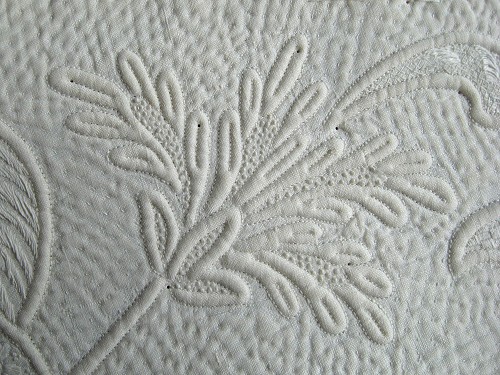
Inv.Nr. TM .22893
ge--Vorderstich, Steppstich, Knötchenstich
e---Running Stitch, Back Stitch,
fr---Point avant, point arrière (point de piqure),
it---Punto filza, punto indietro

TM 22893
Annatextiles VOCABULAR - Embroideries |
| index voca---alphabetical order: german english italiano---embroideries |
| *ge--- deutsch | *e--- english | *fr--- français | *it---
italiano |
Steppstickerei 15. bis 20. Jahrhundert |
Broderie de Marseille, White Corded Quilting, 15th – 20th century |
Broderie de Marseille, courtepointe, boutis, XVe - XXe siècle |
Ricami a trapunto, quilt dal quattrocento al novecento |
| Im
Textilmuseum St.Gallen hat sich eine ansehnliche Gruppe
von weissen, mit leichtem Relief gemusterten Stickereien
erhalten, die besonders im 17. und 18. Jahrhundert
beliebt waren. Man verwendete sie im Alltag, und sie
scheinen sich vom südfranzösischen Marseille aus in
andere Länder verbreitet zu haben. Das Bekanntwerden von
Baumwolle und die Ostindischen Handelsgesellschaften
spielten dabei eine Rolle. In Marseille befand sich ein
wichtiges Herstellungszentrum dieser Bettdecken und
Behänge. Ebenso verzierte man ganze Kleidungsstücke,
wie einzelne Teile davon, z.B. Vorstecker, Hauben,
Mützen. Die Steppstickereien bestehen aus zwei bis drei übereinander gelegten Stofflagen: Ein feiner leinener oder baumwollener Oberstoff und ein weniger kostbarer Unterstoff werden mit Reihen von Vor- oder Rückstichen zusammengehalten. Zusätzlich legt man eine Füllung oder Wattierung aus unterschiedlichen Materialien zwischen die Stoffe, oder die Stickerin zieht mit speziellen Werkzeugen Schnureinlagen durch die kleinen, von den parallelen Stichreihen erzeugten Kanäle. Auf diese Weise ergibt sich auf der Oberseite das leichte, für die Arbeiten typische Relief. Die Technik war auch ausserhalb von Südfrankreich bekannt, entsprechende Spuren haben sich in Paris, Holland, England, Deutschland erhalten. Im 18. Jahrhundert bereicherte man Steppstickereien oft mit Weissstickerei und Durchbrucharbeit. Diese besondere Art der Spitzenstickerei entwickelte sich vor allem im Gebiet von Dresden in Kombination mit «Point de Saxe» oder «Point de Dresde». Dokumente weisen darauf hin, dass diese Spezialität auch andernorts ausgeführt wurde. In seinem Buch «l’art du brodeur» von 1770 bezeichnet Charles Germain de Saint Aubin die Steppstickereien als «broderie de Marseille», andere Dokumente nennen sie «courtepointe» oder «boutis».
|
The Textile Museum of Sankt Gallen preserves a
remarkable group of whitework embroideries with patterns
embroidered in relief. The technique of relief
embroidery, particularly popular in the 17th and 18th
centuries, was used for household items, and seems to
have spread from the South of France – more
particularly Marseille - to several other countries. The
diffusion of cotton as well as commercial relations with
the Indies played no small part in the development of
this type of embroidery. Marseille was a major production
centre of bedcovers, quilted bedspreads, counterpanes and
other hangings, as well as entire pieces of clothing or
accessories such as stomachers, caps, bonnets. Corded quilting requires two to three superimposed layers of cloth: a finer uppermost layer, linen or cotton, and an underlying layer of coarser material are kept together by means of rows of running and back stitches. Various stuffing materials are used as padding in between the layers to create the volume. Corded quilting also achieves a raised aspect: a double row of parallel stitches outlining the pattern shapes is stitched through two thicknesses of fabric, creating funnels through which thin strips, the cords, are then introduced on the reverse of the piece by means of sewing tools. In this manner, a slight relief is created on the front, which is characteristic of this type of embroidery work. The adoption of this technique was not restricted to the South of France; documents and traces of it are preserved in Paris, Holland, England and Germany. During the 18th century, this quilting was often enhanced with whitework and openwork embroidery, more especially in the region of Dresden in combination with “Point de Dresde” or “Point de Saxe” lace. The development of such types of embroidery is also documented elsewhere in Europe. In his treatise “L’Art du brodeur” published in 1770, Charles Germain de Saint Aubin designates embroidery in relief as “broderie de Marseille”, whereas other documents use the terms of “courtepointe” or “boutis”.
|
Photonachweis: - Textilmuseum St.Gallen (Schweiz |
Die
nachfolgenden Beispiele stammen aus der Sammlung des Textilmuseums St.Gallen (Schweiz) |
The following
examples belong to the collection of the Textilmuseum St.Gallen (Switzerland) |
front Inv.Nr. TM .22893 ge--Vorderstich, Steppstich, Knötchenstich e---Running Stitch, Back Stitch, fr---Point avant, point arrière (point de piqure), it---Punto filza, punto indietro |
reverse TM 22893 |
front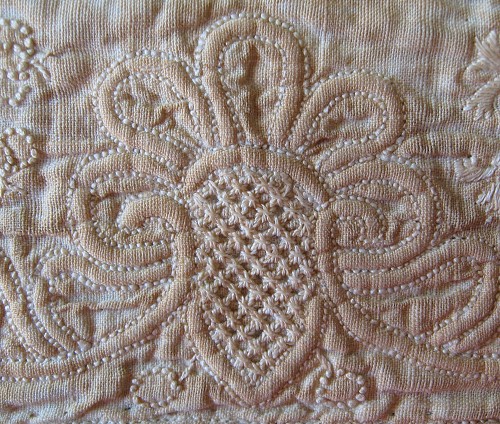 |
reverse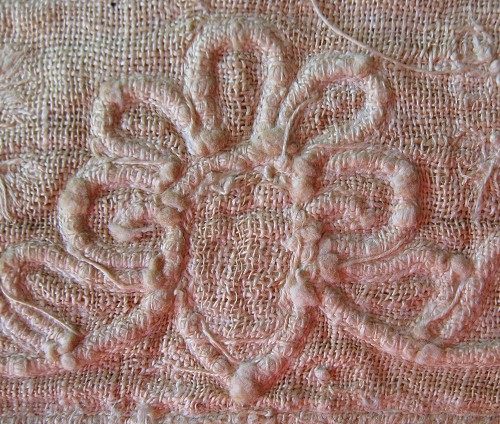 |
front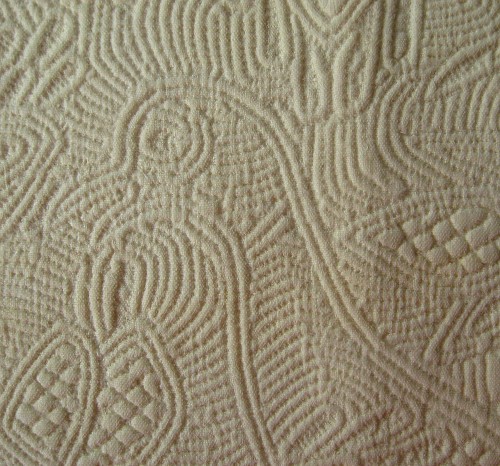 TM 22912 |
reverse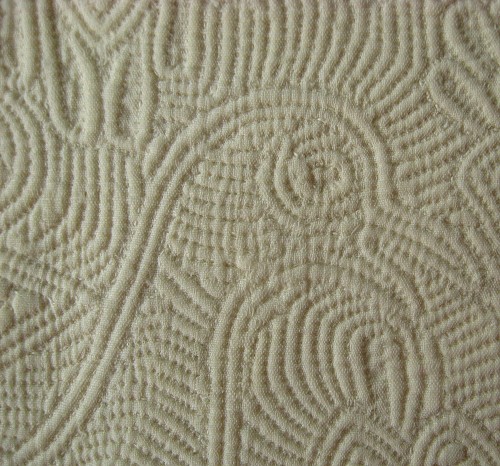 TM 22912 |
front  TM 21959 |
reverse 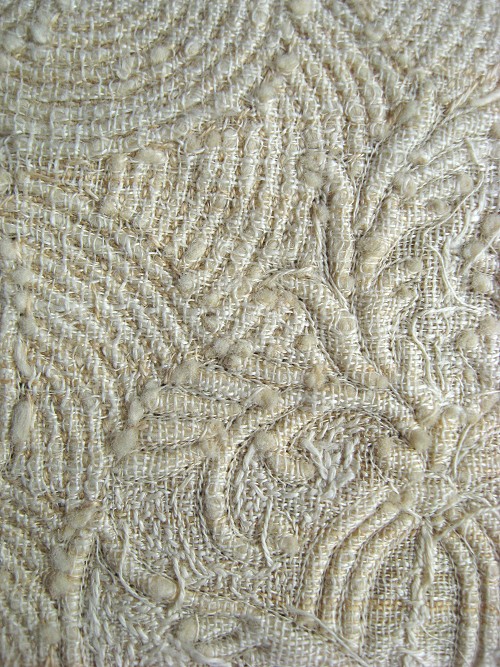 TM 21959 |
front 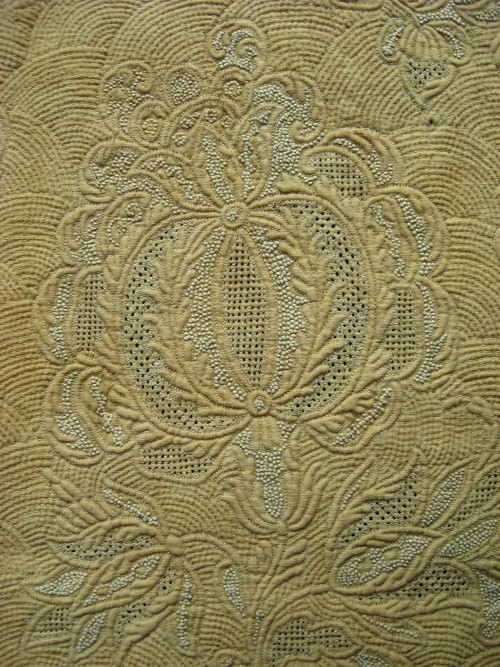 TM 21959 |
reverse 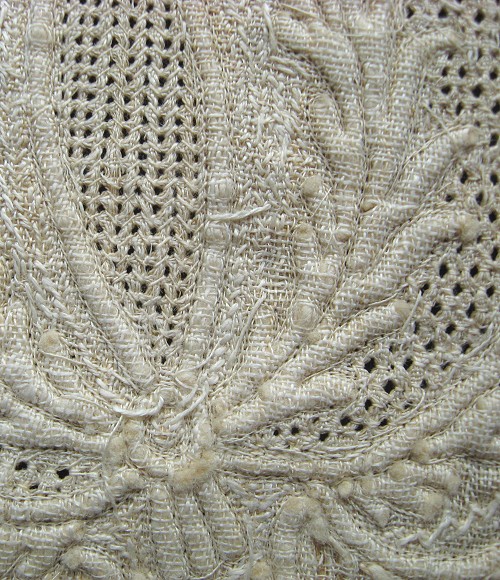 TM 21959 |
front 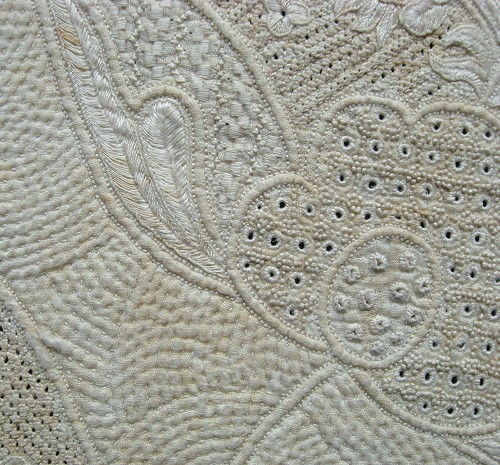 TM 22980 |
reverse 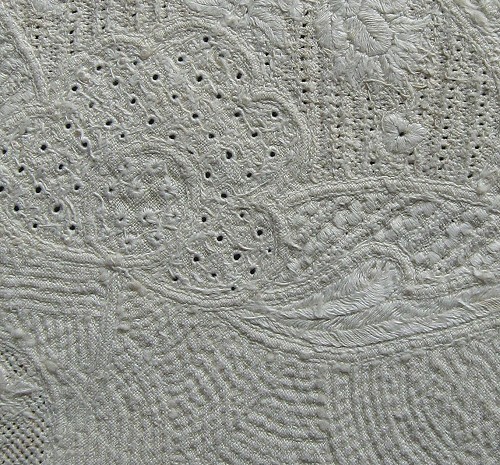 TM 22980 |
front 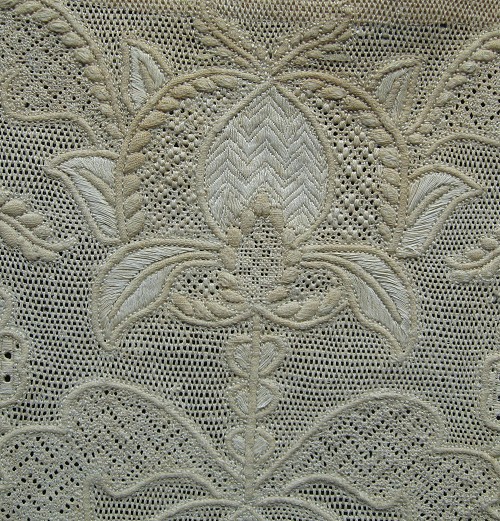 |
reverse  |
| index
voca names: german english italiano embroideries |
Last revised September 2016 |